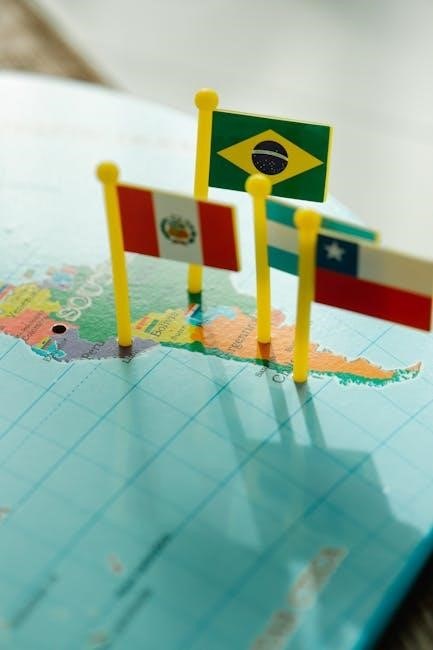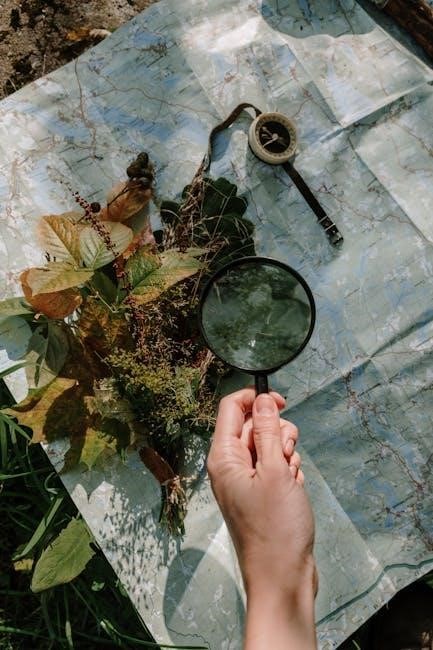The Nightingale Color Guide explores how materials influence clothing hues, as players discover unique color combinations without a dye system, fostering community-driven customization and creativity.

Overview of the Nightingale Color Guide
The Nightingale Color Guide is a comprehensive resource detailing how materials influence clothing colors in the game. It highlights rare materials like Luminous Spore and Britomart’s Locks, which produce unique hues. Players have discovered that specific fabrics, such as those from Bound Straps or Predator Pelt, yield distinct color variations. The guide also addresses the absence of a dye system, leading to community-driven research and shared discoveries, like using Sunflower for bright yellow and green fabrics. Additionally, it covers scale model kits, such as the Bandai RE/100 Nightingale, providing paint conversion charts for accurate color replication. This guide serves as a central hub for crafting and customization, helping players optimize their resources and achieve desired visual outcomes in both in-game and model kit contexts.
Importance of Color in Nightingale Crafting and Customization
Color plays a pivotal role in defining the aesthetic and individuality of crafted items in Nightingale. Players rely on material properties to achieve desired hues, as the game lacks a dye system. This has led to a community-driven effort to map color outcomes, with discoveries like Sunflower yielding bright yellow and green fabrics. The vibrant results from rare materials, such as Luminous Spore and Britomart’s Locks, highlight the importance of resource selection. Color customization not only enhances visual appeal but also fosters creativity and uniqueness among players. The absence of a dye system has sparked experimentation, making color a key aspect of both functional and cosmetic crafting in Nightingale.

Materials and Their Color Impacts in Nightingale
Materials like Luminous Spore, Britomart’s Locks, and Sunflower significantly influence fabric colors, offering unique hues without a dye system, enabling creative customization in Nightingale crafting.
Luminous Spore and Britomart’s Locks: Rare Materials for Unique Colors

Luminous Spore and Britomart’s Locks are rare materials in Nightingale that offer distinct color outcomes. Luminous Spore, found in swamps like Magwytch Marsh F5, adds vibrant, iridescent hues to fabrics. Britomart’s Locks, located in the Ascended Desert, contribute unique earthy tones. Both require a level 100 Sickle to harvest, making them highly sought after for crafting. These materials are essential for achieving specific color palettes, as they provide unparalleled visual effects that cannot be replicated with other resources. Their rarity and unique properties make them cornerstone elements for players aiming to create standout clothing designs in the game.
- Luminous Spore: Found in swamps, adds iridescent colors.
- Britomart’s Locks: Located in deserts, offers earthy tones.
- Requires a level 100 Sickle for harvesting.
Bound Straps and Predator Pelt: Crafting Fabric Colors
Bound Straps and Predator Pelt are key materials for crafting unique fabric colors in Nightingale. Bound Straps, when used with thread, produce a pleasant green fabric, offering a natural and earthy aesthetic. Predator Pelt, on the other hand, results in tan-colored fabrics, adding warmth and depth to crafted items. These materials provide consistent color outcomes, making them reliable choices for players seeking specific hues. Their availability and predictable results make them popular among crafters aiming to create cohesive and visually appealing designs. By experimenting with these materials, players can achieve desired color palettes without relying on random outcomes.
- Bound Straps: Yields green fabrics when crafted with thread.
- Predator Pelt: Produces tan-colored fabrics.
- Both materials offer consistent, predictable results.

Prey Pelt and Wolf-Fur Fluff: Distinct Color Variations
Prey Pelt and Wolf-Fur Fluff introduce unique color variations in Nightingale crafting. Prey Pelt, when used without Wolf-Fur Fluff, results in distinct color outcomes compared to Predator Pelt. This material combination often yields earthy tones, offering a subtle yet diverse palette. Wolf-Fur Fluff, when incorporated, enhances texture and color depth, creating a softer, more natural appearance. Players have noted that Prey Pelt crafted items lack the wolf-fur fluff detail, leading to a different aesthetic. These materials provide crafters with options for creating muted, natural hues that complement various in-game environments. Experimenting with Prey Pelt and Wolf-Fur Fluff allows for tailored color results, adding versatility to crafting projects.
- Prey Pelt: Offers earthy tones without Wolf-Fur Fluff.
- Wolf-Fur Fluff: Enhances texture and color depth.
- Both materials provide natural, subtle color variations.

The Absence of a Dye System in Nightingale
Nightingale lacks a dye system, causing frustration as colors are randomly assigned based on materials. Players rely on material combinations for unique hues, seeking customization control.
Player Frustrations with Random Color Assignments
Players express frustration over Nightingale’s random color assignments, as fabric colors are determined by materials used, leaving little control for desired aesthetics. This unpredictability sparks community discussions, with many seeking clearer patterns or a dye system for customization. Despite efforts, the lack of direct control over colors remains a significant concern, prompting players to experiment and share findings. For instance, materials like Sunflower and Predator Pelt yield specific hues, offering glimpses of customization potential. The community’s proactive approach highlights the need for a centralized guide to decode color outcomes, fostering collaboration and creativity among players aiming to achieve their desired looks in Nightingale.
Community Workarounds for Customizing Colors
The Nightingale community has developed creative workarounds to customize colors, as the game lacks a dye system. Players experiment with rare materials like Luminous Spore and Britomart’s Locks, which yield unique hues. Shared discoveries, such as Sunflower for bright yellow and Green fabrics from Bound Straps, have become invaluable. Community guides detail how specific materials produce distinct colors, helping others achieve desired aesthetics. Players collaborate, documenting their findings and creating centralized resources. These efforts highlight the community’s resourcefulness and dedication to overcoming customization challenges in Nightingale.
Community Discoveries and Contributions

Players collectively uncover material color patterns, sharing findings like Sunflower for bright yellow and Bound Straps for green fabrics, fostering a collaborative customization culture in Nightingale.
Player-Driven Research on Material Colors
Players have dedicated significant time to experimenting with various materials, documenting how each affects fabric colors. Through trial and error, they’ve identified specific patterns, such as Luminous Spore producing vibrant hues and Britomart’s Locks contributing unique shades. This collaborative effort has revealed that materials like Bound Straps and Predator Pelt yield distinct color variations, while Prey Pelt and Wolf-Fur Fluff create different outcomes. The community’s meticulous research has provided insights into the intricate relationships between materials and their resulting colors, helping players craft desired aesthetics without a dye system. These findings have been shared widely, enabling others to achieve specific looks and fostering a deeper understanding of Nightingale’s customization possibilities.
Shared Discoveries: Sunflower for Bright Yellow and Green Fabrics
The community has uncovered that Sunflower materials can produce striking bright yellow and green fabrics, offering vibrant options for crafting. Players discovered that using Sunflower in specific recipes yields these unique colors, which were previously unexpected. This breakthrough has been widely shared, allowing others to replicate the results and expand their customization possibilities. The use of Sunflower has become a key strategy for achieving these hues, with many incorporating it into their crafting plans. This shared knowledge highlights the collaborative spirit of the Nightingale community, as players continue to explore and document new material combinations to unlock a wider palette of colors for their gear and clothing.
Centralized Guides for Crafting and Color Outcomes
The Nightingale community has developed centralized guides to help players understand how different materials affect crafting and color outcomes. These guides, often shared on platforms like Steam and Reddit, compile extensive research on material properties and their resulting hues. For instance, a popular Steam guide details how specific materials like Luminous Spore and Britomart’s Locks yield unique colors, while another guide focuses on metals and gems, providing insights into their color contributions. By centralizing this information, players can reduce trial and error, making informed decisions when crafting. These resources have become invaluable, fostering a sense of collaboration and helping players achieve their desired aesthetic outcomes in Nightingale.

Color Guide for Nightingale Clothing
Nightingale clothing colors are determined by materials like Luminous Spore and Britomart’s Locks, with vibrant hues emerging from specific combinations, as shared in community guides and discoveries.
Base Gear Scores and Crafting Priorities
Base gear scores in Nightingale significantly impact crafting outcomes, influencing both functionality and aesthetics. Higher-tier materials like Luminous Spore and Britomart’s Locks yield unique color results, while lower-tier options may limit customization. Prioritizing resource gathering ensures access to rare materials, which are essential for achieving specific hues. Managing hunger and rest is also crucial, as a well-conditioned Realmwalker crafts more effectively. Players often focus on Simple Gear for accessibility, while Trapper Gear offers higher scores but requires more resources. Balancing these priorities helps optimize both color variety and gear performance, making informed material choices key to successful crafting. Experimentation and documentation are encouraged to uncover hidden color potentials and refine crafting strategies.
Simple Gear vs. Trapper Gear: Color and Score Comparisons
Simple Gear and Trapper Gear in Nightingale offer distinct differences in both color outcomes and gear scores. Simple Gear is more accessible, requiring fewer resources, but results in lower scores and more muted color palettes. Trapper Gear, while resource-intensive, yields higher scores and vibrant colors, such as bright yellows from Sunflower and greens from Bound Straps. Players often prioritize Trapper Gear for its superior aesthetic and functional benefits, despite the higher crafting demands. Understanding these comparisons helps players make informed decisions, balancing visual customization with gameplay efficiency. This trade-off is central to optimizing both appearance and performance in Nightingale’s crafting system.
Nightingale Model Kit Color Guide
The Nightingale Model Kit Color Guide provides detailed paint schemes for scale models, including the RE/100 and HG versions, with charts and translations for accurate customization.
Bandai RE/100 1/100 MSN-04 II Nightingale Color Guide
The Bandai RE/100 1/100 MSN-04 II Nightingale Color Guide offers a detailed breakdown of paint schemes and color codes for this scale model. Translated from Japanese, the guide provides English-speaking modelers with precise instructions for achieving accurate colors. It includes a construction manual and a paint conversion chart, ensuring that enthusiasts can replicate the Nightingale’s iconic look. The guide covers various parts of the model, from the main body to smaller details, and specifies the exact paints needed. This resource is invaluable for both experienced modelers and newcomers, helping them bring their Nightingale kits to life with authenticity and precision. The guide is part of a broader effort to support the Nightingale modeling community with clear, accessible information.
Paint Conversion Charts for Scale Models
Paint conversion charts for Nightingale scale models provide essential color-matching solutions for modelers. These charts map original paint codes to equivalent shades from popular brands, ensuring accuracy. Available for both 1/100 and 1/144 scales, they detail hues for the Nightingale’s iconic white and dark gray sections. The charts are particularly useful for replicating the model’s unique features, such as its sleek armor and wing details. By referencing these guides, modelers can achieve precise color consistency. The charts are widely shared in the modeling community, offering a valuable resource for both experienced builders and newcomers. They complement the official manuals, making it easier to bring the Nightingale to life in scale form with professional results.

English Manual and Color Guide for 1/144 HG MSN-04II Nightingale
The English manual and color guide for the 1/144 HG MSN-04II Nightingale provides detailed instructions and paint references for modelers. Translated from the original Japanese manual, it includes a comprehensive color guide to help replicate the Nightingale’s iconic appearance. The guide specifies paint codes for various sections, such as the white and dark gray armor, ensuring accuracy. Additionally, it offers a paint conversion chart, mapping original colors to equivalent shades from popular brands. This resource is invaluable for both experienced builders and newcomers, aiding in achieving professional-looking results. The manual also covers assembly steps and tips for enhancing details, making it a must-have for fans of the Nightingale scale model.

Final Tips for Crafting and Customization
Effectively manage resources to optimize crafting outcomes. Experiment with materials and document results for consistent, desired colors and patterns in Nightingale.
Managing Resources for Optimal Crafting Outcomes
Efficiently managing resources is crucial for achieving desired crafting results in Nightingale. Prioritize gathering rare materials like Luminous Spore and Britomart’s Locks, which require a level 100 Sickle. Experiment with fabric combinations, such as using Sunflower for bright yellows or Predator Pelt for tan hues. Document your findings to refine future crafting attempts. Balancing resource collection with your Realmwalker’s hunger and rest ensures sustained productivity. By strategically allocating materials and testing their color outcomes, you can unlock unique customization options without waste. This approach maximizes your crafting efficiency and enhances your ability to create visually appealing gear in Nightingale.
Experimentation and Documentation for Better Results
Experimentation is key to mastering Nightingale’s color system, as materials like Sunflower yield bright yellows and greens, while Luminous Spore and Britomart’s Locks create unique hues. Documenting each crafting attempt helps track patterns and outcomes, reducing trial and error. Players often share discoveries, such as Predator Pelt producing tan fabrics, while Prey Pelt lacks wolf-fur fluff, affecting color results. Keeping detailed records of material combinations and their visual effects ensures consistency and refinement. This collaborative approach fosters a community-driven understanding of Nightingale’s color mechanics, enabling players to achieve their desired aesthetic without unnecessary resource waste. By sharing findings, the community collectively advances their crafting prowess and customization capabilities.
Conclusion
The Nightingale Color Guide highlights material-driven customization, community discoveries, and the absence of a dye system, inspiring future crafting innovations and player creativity in Nightingale.
Summarizing the Nightingale Color Guide
The Nightingale Color Guide provides a comprehensive overview of how materials influence clothing colors, highlighting the absence of a dye system and its impact on customization. Players have discovered that specific materials, such as Luminous Spore and Britomart’s Locks, yield unique hues, while others like Sunflower produce bright yellows. The community has rallied to create detailed guides, sharing findings on fabric colors derived from Bound Straps, Predator Pelt, and Prey Pelt. Additionally, resources for scale models, such as the Bandai RE/100 Nightingale, offer paint conversion charts for accurate color replication. This collective effort underscores the importance of experimentation and documentation, empowering players to craft gear with optimal color outcomes and fostering creativity within the game’s constraints.
Future Prospects for Crafting and Customization in Nightingale
The future of Nightingale’s crafting and customization holds promise, with the community driving innovation. Players continue to uncover new material color combinations, inspiring updates to existing guides. The absence of a dye system may be addressed in future updates, potentially introducing more control over color customization. Meanwhile, the discovery of materials like Sunflower for bright yellows and greens highlights the game’s potential for vibrant designs. As players share their findings, centralized resources will evolve, offering clearer paths for achieving desired aesthetics. With ongoing experimentation and collaboration, the Nightingale community is poised to unlock even more creative possibilities, enhancing the game’s depth and personalization options for crafters and enthusiasts alike.
